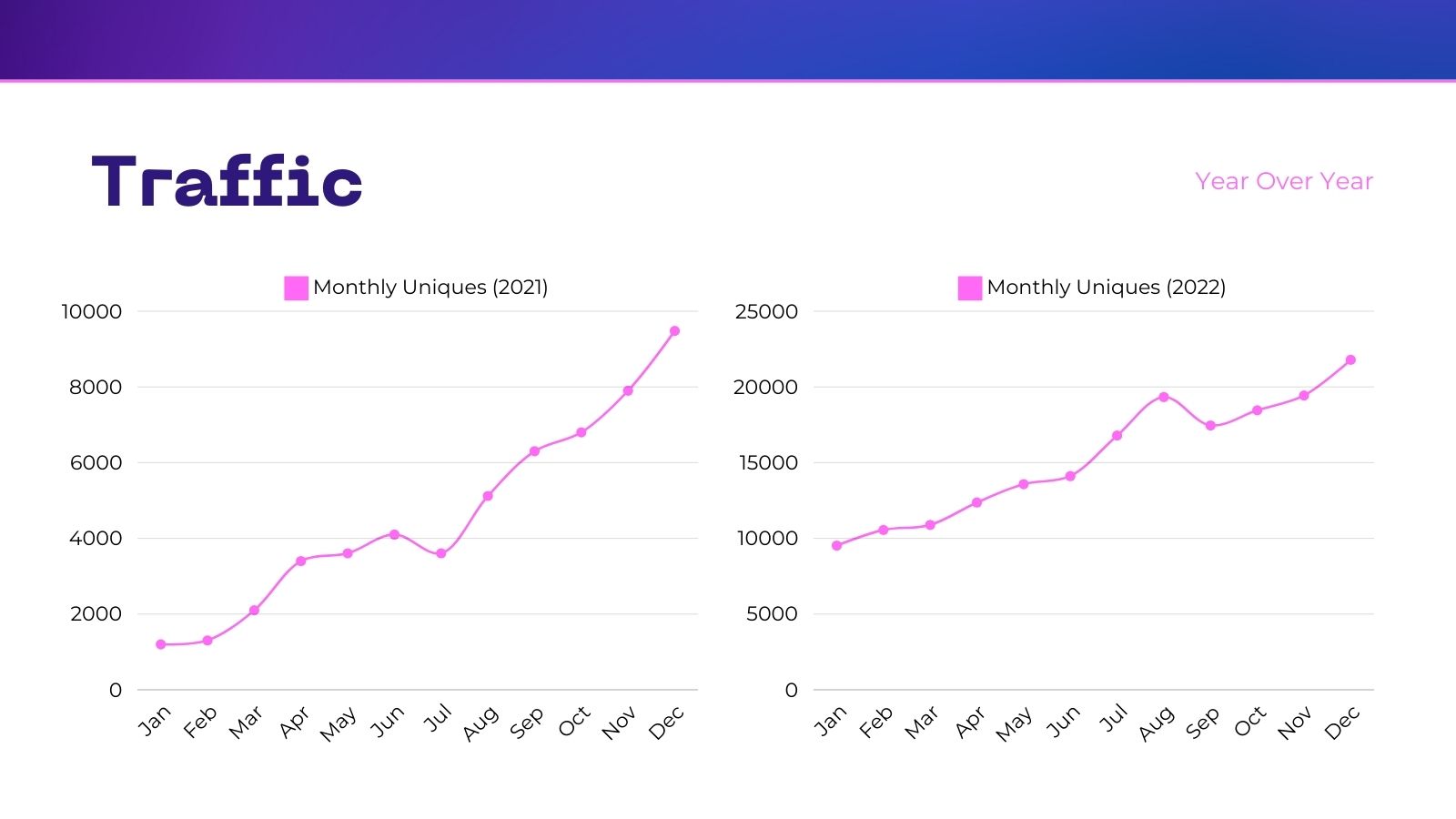SEO is difficult to get right for even seasoned professionals. There are a lot of moving parts and shifting goal posts. What’s really important when trying to steer a site to more traffic is accurate and actionable reporting data. When it comes to reporting software, there is more data available than anyone could ever hope to use. Monthly reports that only focus on important data can really help to cut through the noise and show you what needs worked on next.
Data sources: Google Analytics, PPC, Search Console
To begin building a useful SEO report, you need to pull from the right data sources. This typically starts with Google Analytics, Google Ads, and Search Console, each of which provides its own unique insights. These tools can help paint a full picture of how users find your site and what they do once they get there.
Google Analytics provides detailed information about your site’s visitors. You’ll want to keep an eye on key metrics like bounce rate, session duration, and pages per session. This helps you understand how engaged your audience is. If you notice a high bounce rate on particular pages, it might signal that your content or your design isn’t good enough. Meanwhile, session duration and pages per session show how long users are staying on your site and how many pages they’re exploring.
Leveraging PPC and Search Console Insights to Boost Your SEO Strategy
PPC reports, such as those from Google Ads, give you a clear view of how well your paid campaigns are performing in driving traffic. Even if SEO is your main focus, PPC can provide valuable insights that shouldn’t be ignored. For example, analysing which paid keywords drive the most conversions can help inform your SEO strategy. There’s often a correlation between what works in PPC and what will work organically, especially when it comes to targeting high-converting keywords.
Search Console offers another perspective, giving you insights directly from Google about how your site is performing in search results. It’s invaluable for understanding which queries are driving traffic to your site, where your site ranks for certain keywords, and which pages are receiving the most clicks from search results. Using Search Console in combination with Google Analytics helps you see both how users find your site and what they do once they land there.
By combining data from these three sources, you can start to get a comprehensive view of what’s working and where you need to make adjustments. The SEO company Big Surf Digital are big proponents of using this kind of reporting to decide on how next to proceed with an SEO campaign.
Traffic Sources
The next step in creating a report that informs your SEO moves is breaking down your traffic sources. Where is your traffic coming from? Is it mostly organic search, direct visits, social media, or referrals from other websites? Understanding this will help you decide where to focus your efforts.
For SEO, the organic traffic section is where you’ll want to pay the most attention. All of the data you bring into your reports needs to be updated monthly so that you can compare traffic levels, keyword positions and conversion numbers.
Take note of any significant increases or decreases in organic traffic over the reporting period. If there’s a sudden drop, this could be a signal of a larger issue. Perhaps you’ve been affected by a Google algorithm update, or maybe some of your site’s pages have lost ranking for high-value keywords. On the other hand, a traffic increase can indicate that your SEO efforts are paying off.
Beyond organic traffic, it’s important to monitor other traffic sources too. Direct traffic can give you clues about how strong your brand awareness is, while referral traffic can highlight partnership opportunities or weaknesses in link building strategies. Social media traffic can provide useful feedback on how well your content is resonating with users across different platforms.
For each traffic source, consider setting up custom segments in Google Analytics to track how users from each source behave once they land on your site. This can help you identify whether organic visitors, for example, are more likely to convert than those coming from social media or PPC. It’s these insights that will drive your next SEO moves.
Conversions: Set Up and Reporting
While traffic is important, conversions are what really matter. A well-designed SEO report should always include data on conversions. Whether you’re tracking product purchases, contact form submissions, or newsletter signups, knowing how many visitors are converting is essential.
Before you start analysing conversion data, you need to make sure your goals are set up correctly in Google Analytics. Without the right goals in place, you won’t be able to measure the effectiveness of your SEO efforts. If you’re new to goal-setting in Analytics, take some time to go through your site’s key actions. What are you trying to achieve? For an ecommerce site, this might be tracking completed purchases. For a non-ecommerce site, it might be measuring enquiry forms, email signups or downloads of a resource.
Once your goals are set up, you can start looking at how well your site is converting visitors. Conversion rate is one of the most critical metrics here. A high conversion rate indicates that your site is effectively turning visitors into leads or customers. If your conversion rate is low, it may suggest that you need to make improvements to your landing pages or optimise your calls to action. Look at conversion rates across different traffic sources to see if some are performing better than others. If PPC visitors convert more than organic visitors, this might indicate that you need to refine your SEO targeting.
Regular Keyword Tracking
Finally, no SEO report would be complete without tracking your keyword performance. Keywords are the foundation of any SEO strategy, and tracking how your target keywords rank over time can give you a good sense of whether your efforts are paying off.
There are a variety of tools that allow you to track keyword rankings, from Search Console to third-party SEO software like SEMrush or Ahrefs. Whichever tool you choose, make sure you’re regularly monitoring the rankings of your most important keywords. You’ll want to keep an eye on both the keywords you’re already ranking for and those you’re targeting in your current campaigns. If you notice a keyword suddenly dropping in ranking, it’s a signal to investigate further. Maybe a competitor has started targeting the same keyword, or perhaps your content isn’t as optimised as it could be.
As you track keyword performance, don’t forget to consider the intent behind the keywords. Ranking number one for a keyword is great, but if that keyword doesn’t align with what your target audience is searching for, it won’t drive valuable traffic. Make sure your keywords are aligned with your content and your overall business goals.
Wrapping Up
Creating reports that inform your next SEO moves isn’t just about gathering data. It’s about understanding what that data means and how it can guide your strategy. By pulling from the right sources, analysing your traffic, tracking conversions, and keeping an eye on keyword performance, you can build a report that not only reflects your site’s current performance but also points you in the right direction for growth. Regular reporting is essential to ensure that your SEO strategy stays on track and continues to deliver results.








